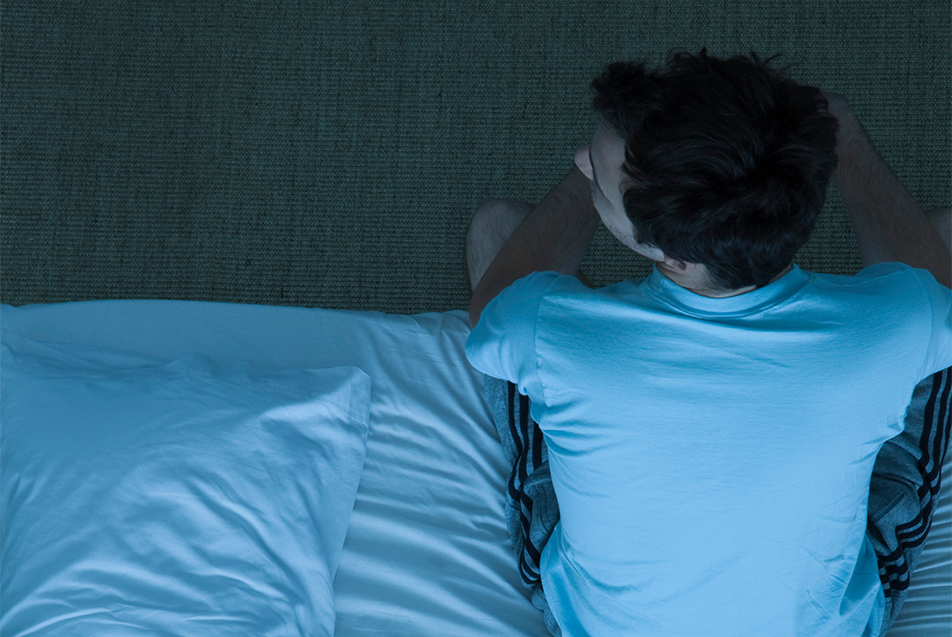
This post was written by Srinivasan Devanathan, MD, PPG – Sleep Medicine.
First, we have to understand, when we divide sleep into stages of sleep, we’re looking at two categories: non-REM sleep (NREM) and REM sleep. Abnormal behaviors, such as sleep walking, are arousal disorders, which occur in that deeper NREM sleep, specifically in a stage called slow-wave sleep.
This deep sleep is a very protective sleep. Loved ones often think the person sleepwalking should respond to a tactile stimulus, like cold or touch, but they might not be aware. This is why safety is a primary concern.
Symptoms
Arousal disorders typically occur within the first 90 minutes after a person actually falls asleep. They can last for a few minutes or as long as a half hour. The sleepwalker will appear to be awake, but also confused, disoriented, unresponsive and perhaps agitated.
In most cases, sleepwalking is characterized by a lack of awareness and recall. The person is not aware of their behavior, and usually only knows because of a family member or bed partner who observes the activity. A person might walk into a sibling’s room, or conduct bizarre, unpredictable activity.
Triggers
There are a number of potential triggers for sleepwalking, including:
- Stress or anxiety
- Caffeine
- Inadequate sleep or chronic sleep deprivation
- Disrupted or adjusted sleep schedule (such as removing a nap from a child’s day)
- Forced awakening
- Family history (50-60% chance of occurrence if both parents had it, 40% if one did, 20% if neither parent was a sleepwalker)
- Other conditions, such as Tourette’s syndrome
- Frequent migraines
- New or foreign sleep environment
- Exposure to too much light or noise
- Medications (such as sleep aids and antidepressants)
- Going to sleep with a full bladder
- Fever
In a small number of cases, a child should be evaluated for contributing conditions, such as sleep apnea and periodic leg movement disorder, but sleepwalking is typically benign. It is not associated with correlating neurological or psychiatric disorders.
Often, parents worry that their child might be experiencing a seizure disorder. To be brief, seizures are often more frequent and tend to occur in older children and adults. Seizures are a stereotypical behavior, meaning they involve the same sort of behavior every time. Sleepwalking is less consistent.

Safety
The biggest concern with sleepwalkers is safety, for them and for others in the home. They often start by sitting up and then start walking. Usually their eyes are open. They might mumble or try to talk. They’re often very clumsy. There’s a risk of them falling, particularly down stairs, bumping into things and getting cuts or bruises, or getting ahold of dangerous objects and hurting themselves or others. Because it’s hard to tell if they are actually awake, it’s a very dangerous and challenging scenario.
While parents have the best intentions, waking someone while they’re sleepwalking can increase their agitation and prolong the event. A child might go back to bed and back to normal sleep. The best thing a caregiver or partner can do is watch the sleepwalker to ensure their safety, and possibly try to guide them gently back to their bed. Don’t interact and don’t discuss the event the next day, as this can increase the individual’s worry and disrupt their sleep pattern, thus triggering more sleepwalking.
Often, in addition to their well-being, parents worry about the social impact sleepwalking will have on their child. They have concerns about sending their child to a sleepover, summer camp, etc. There’s really no reason a child can’t still participate in these events. Parents just need to communicate appropriately with other parents and caregivers.
Treatment
Treatment for sleepwalking typically doesn’t require significant testing. If a partner or parent suspects sleepwalking, and believes it might be triggered by an organic condition such as leg movement disorder, sleep apnea, etc. their loved one might benefit from screening for these conditions.
One of the most helpful things a loved one can do is document the times of occurrence. This is helpful in identifying the pattern of the sleepwalking events. One you have a month or so of sleep diary data, you can start to notice patterns. These patterns will allow you to implement the scheduled awakening method, if you choose. This method involves a gentle awakening initiated 15-30 before a sleepwalking event would typically occur. You want to wake the child just slightly, perhaps by tapping him or her on the shoulder or a small nudge to encourage them to change positions. This alters the slow-wave structure in the brain and lessens the chance the individual will get up and sleepwalk. You need to apply the method for several weeks to see best results.
The most important thing is to ensure the individual’s safety. Put gates across stairs, use alarms on doors, lock doors and windows. Often sleepwalkers will engage in eating behaviors, so it’s important to keep sharp objects, like knives, up and out of reach.
Maintain a healthy sleep cycle. Adults need 7-8 hours, and children need 9-11 hours, depending on their age. Avoid caffeine and technology before bed and create an environment for restful sleep. Most children grow out of the tendency to sleepwalk by age 8.
There are medications and other treatments to help with sleepwalking. To learn more, speak to a sleep medicine physician.
9 tips for sleepwalking safety
- Get adequate sleep.
- Meditate or do relaxation exercises.
- Avoid any kind of stimuli (auditory or visual) prior to bedtime.
- Keep a safe sleeping environment free of harmful or sharp objects.
- Sleep in a bedroom on the ground floor if possible. To prevent a fall, avoid bunk beds.
- Lock the doors and windows.
- Remove obstacles in the room. Tripping over toys or objects is a potential hazard.
- Cover glass windows with heavy drapes.
- Place an alarm or bell on the bedroom door and if necessary, on any windows.



